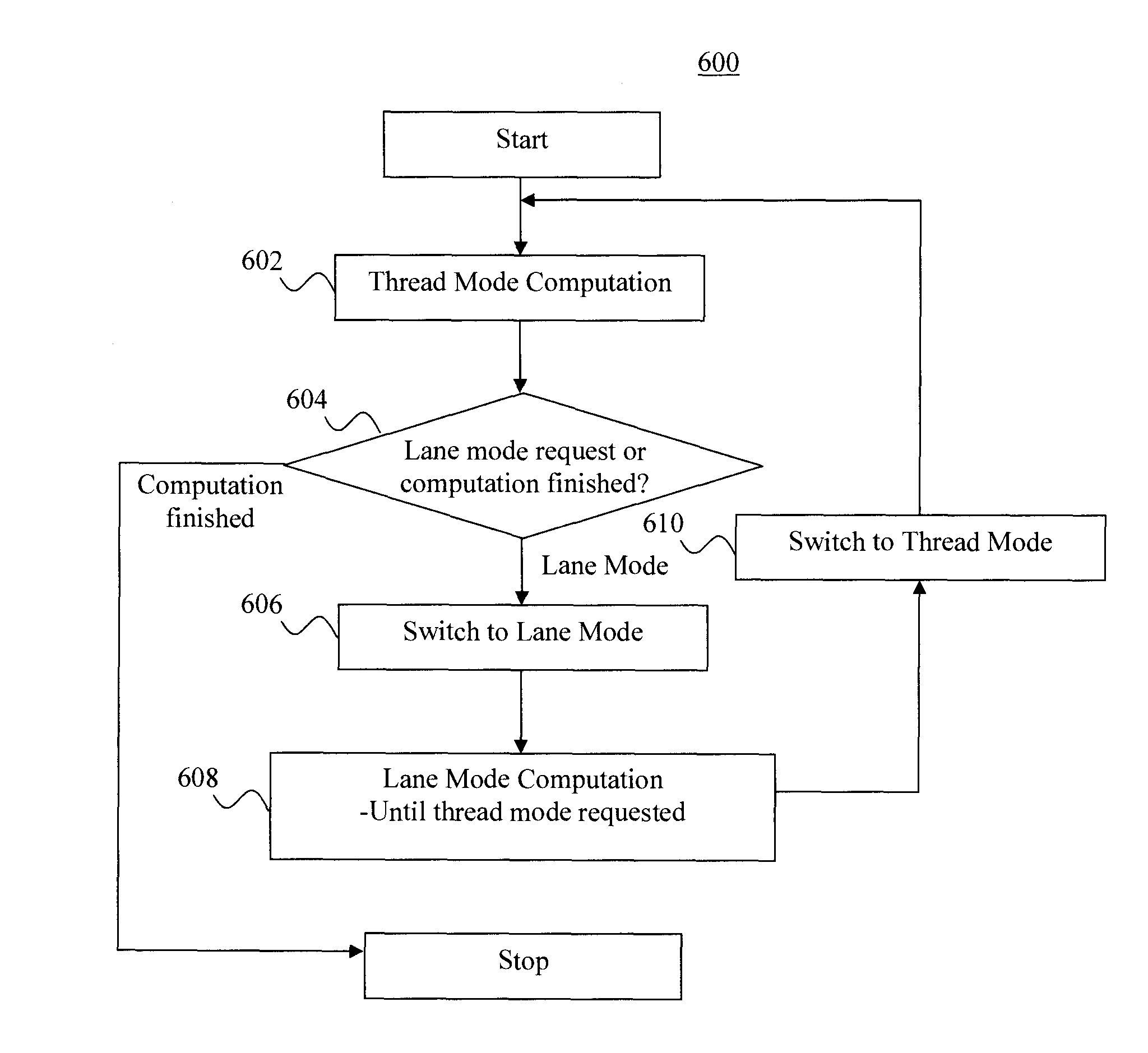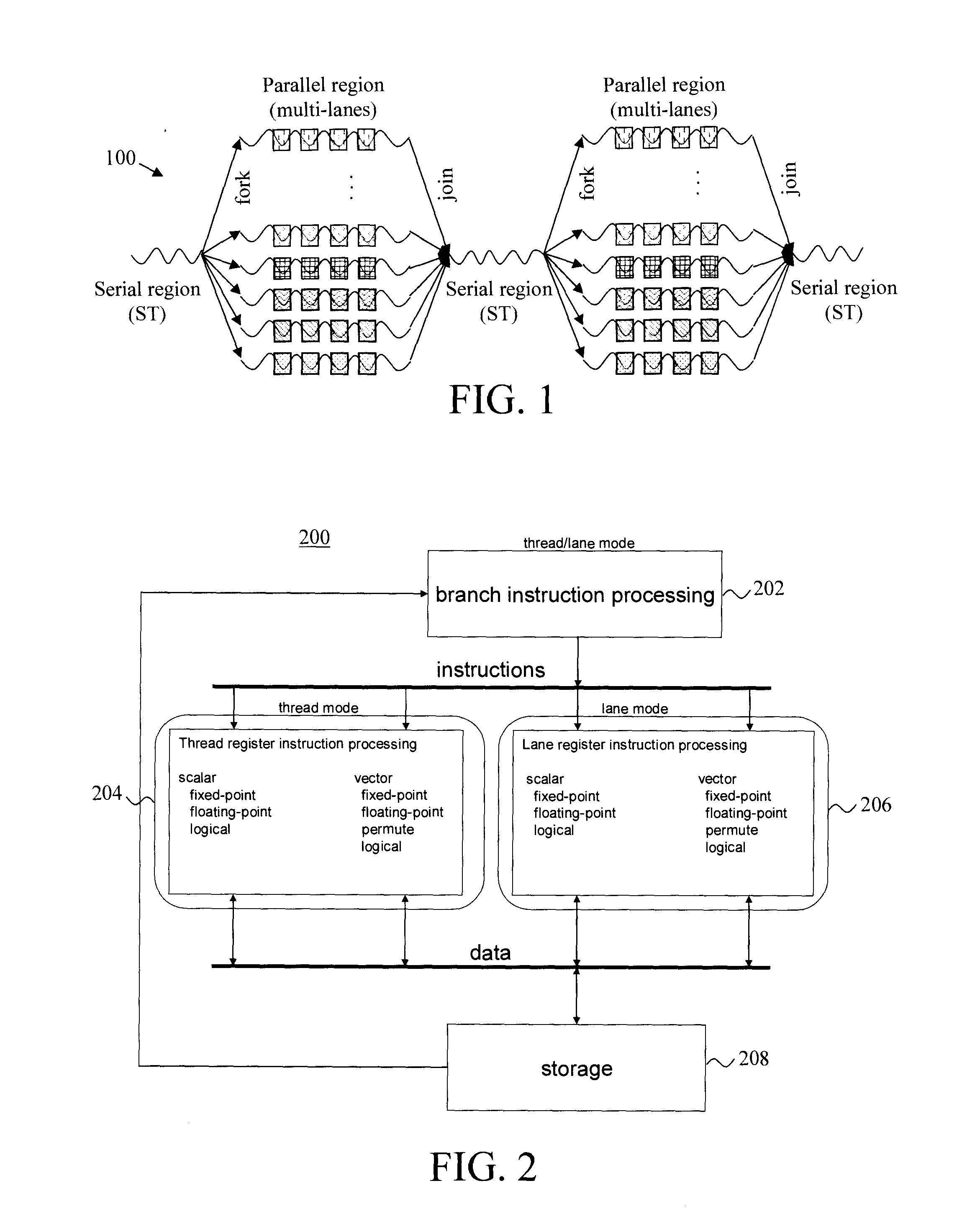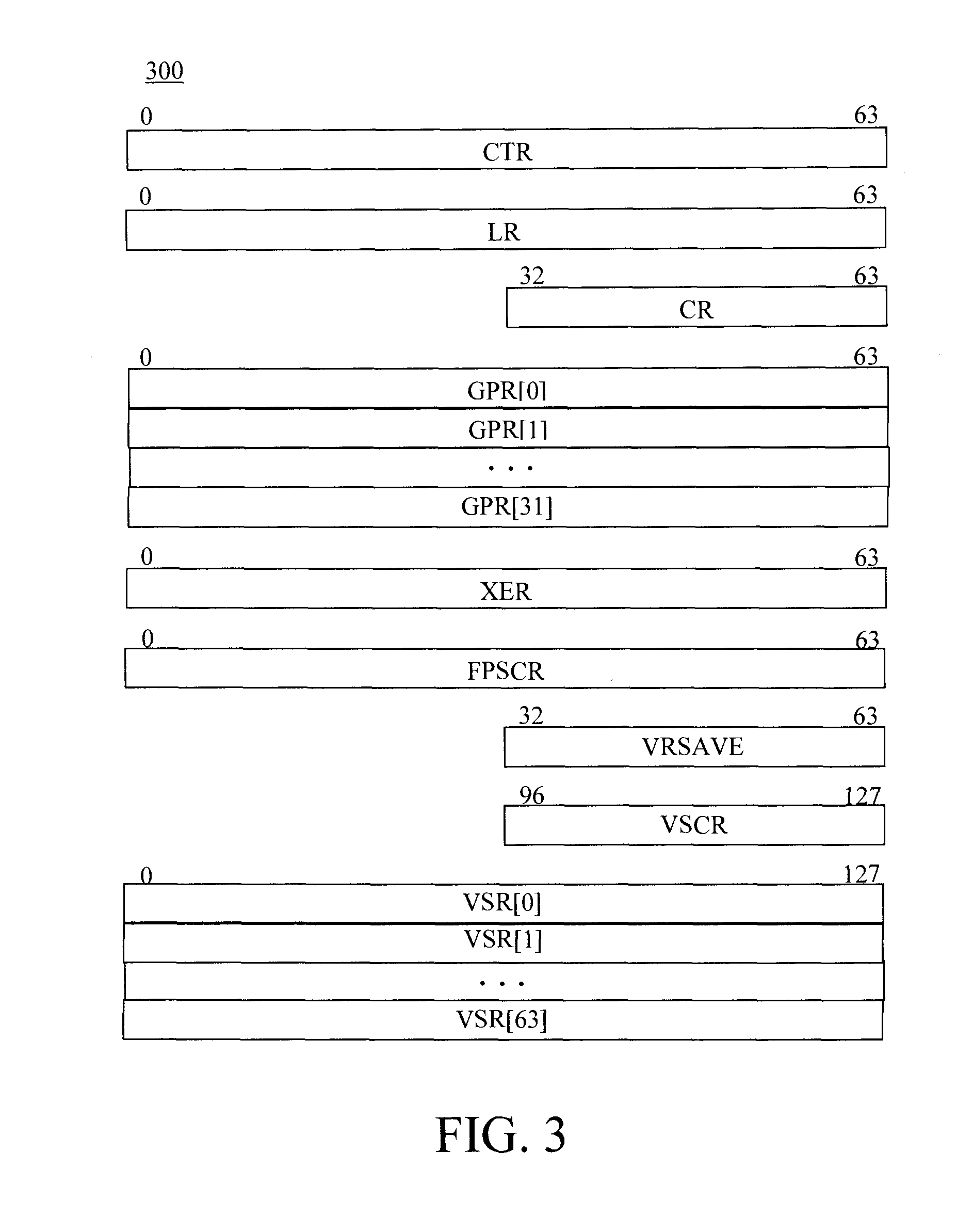Transitioning the Processor Core from Thread to Lane Mode and Enabling Data Transfer Between the Two Modes
- Summary
- Abstract
- Description
- Claims
- Application Information
AI Technical Summary
Benefits of technology
Problems solved by technology
Method used
Image
Examples
Embodiment Construction
[0017]Provided herein are techniques for implementing dual execution (thread and lane) modes in the same processor executing a single stream of instructions (using a unified processor instruction set architecture instruction stream that can alternate between serial and parallel regions). Thus accordingly herein, one processor executes one stream of instructions but operates in two modes, and what the instruction does depends on the mode. Specifically, the present techniques accomplish vectorization in space by replicating the same instruction across multiple (architected) lanes, with a different set of registers for each lane. At any given time, a lane can be in one of two states: enabled or disabled. Enabled lanes perform operations. Disabled lanes do not perform operations. It is noted that the terms “enabled” and “disabled,” as used herein, refer to the architected lanes. Techniques are then provided herein for switching between the two modes of execution.
[0018]Use of a unified p...
PUM
 Login to View More
Login to View More Abstract
Description
Claims
Application Information
 Login to View More
Login to View More - R&D Engineer
- R&D Manager
- IP Professional
- Industry Leading Data Capabilities
- Powerful AI technology
- Patent DNA Extraction
Browse by: Latest US Patents, China's latest patents, Technical Efficacy Thesaurus, Application Domain, Technology Topic, Popular Technical Reports.
© 2024 PatSnap. All rights reserved.Legal|Privacy policy|Modern Slavery Act Transparency Statement|Sitemap|About US| Contact US: help@patsnap.com










